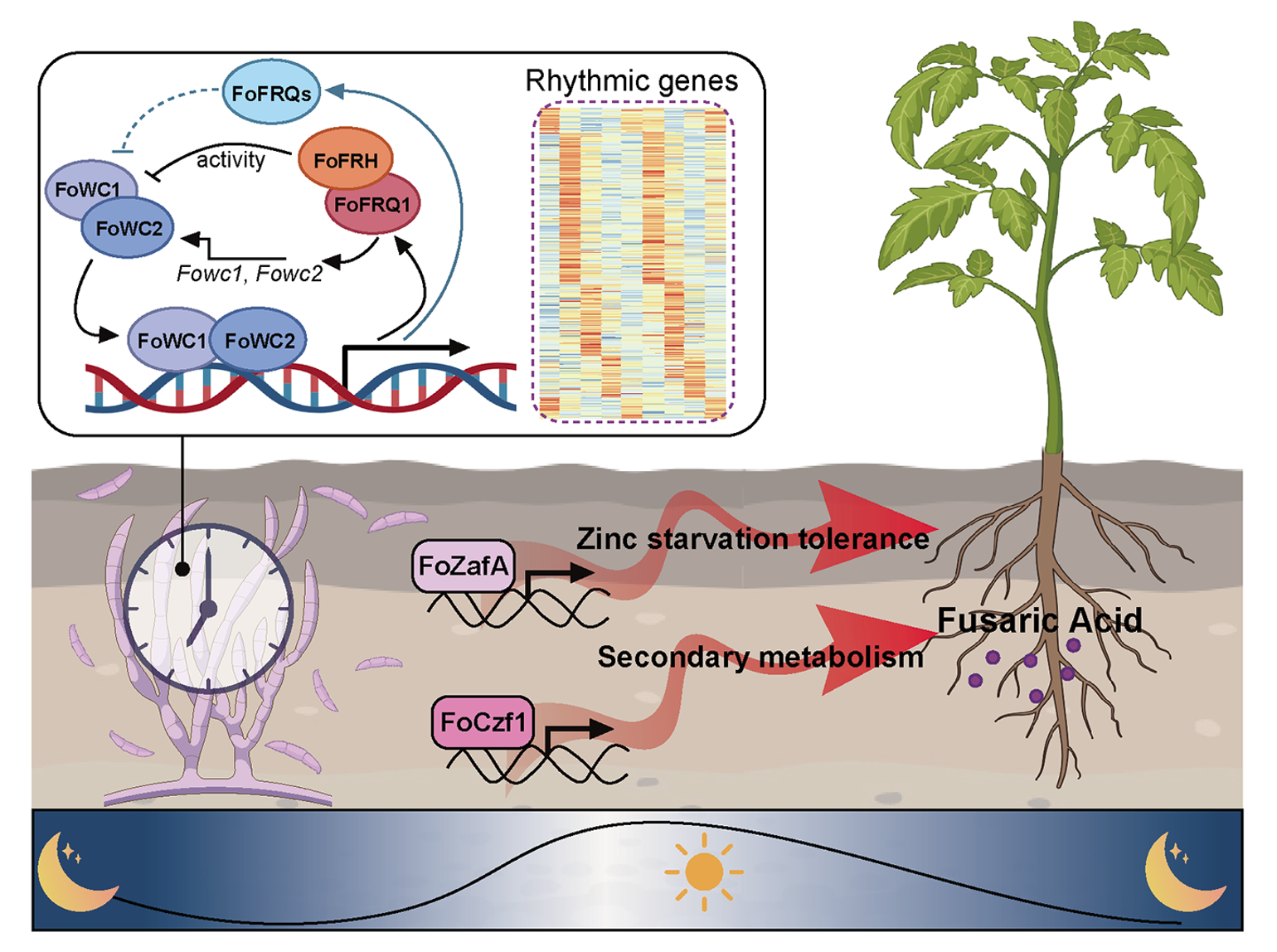Circadian clocks are time-regulation systems that enable organisms to manage diverse biological processes in response to daily environmental changes. They play a crucial role in coordinating biological functions by controlling the rhythmic expression of genes. While circadian clocks are known to modulate host immune responses to pathogen infections, their role in regulating pathogen pathogenesis remains unclear.
A team led by Prof. LIU Xiao from the Institute of Microbiology, Chinese Academy of Sciences has revealed how the fungal circadian clock regulates zinc starvation responses and secondary metabolism in Fusarium oxysporum, driving its pathogenicity. Published in Science Advances, this study offers new insights into the clock regulation of host-pathogen interactions.
The findings demonstrate the existence of a functional circadian clock in F. oxysporum. It features a negative feedback loop comprising the transcription factors FoWC1 and FoWC2, and the core clock protein FoFRQ. Notably, multiple Fofrq genes contribute to the circadian oscillator, with Fofrq1 serving as the primary regulator.
Detection of the clock mutant’s pathogenicity underscores the importance of clock genes in pathogenesis, and further analysis confirmed the diurnal variation of fungal virulence under clock control. The time-series transcriptome identified rhythmically expressed circadian clock genes, particularly those enriched in transcription factors and metabolism, with partial overlap with reported pathogenic factors. This regulation enables F. oxysporum to adapt to the host environment, such as by alleviating zinc starvation stress and enhancing the production of the phytotoxin fusaric acid.
This study highlights the importance of the endogenous circadian clock in F. oxysporum pathogenesis and host invasion, paving the way for new strategies in agricultural disease control.
The study was conducted in collaboration with Yunnan University, Henan University, China Agricultural University, and the University of Texas Southwestern Medical Center. This research was supported by the Beijing Natural Science Foundation, the Strategic Priority Research Program of the Chinese Academy of Sciences, and the National Natural Science Foundation of China.

Figure: Model illustrating how the endogenous circadian clock in F. oxysporum contributes to virulence and infection. (Image by Prof. LIU Xiao’s group)
Full text link: Circadian clock is critical for fungal pathogenesis by regulating zinc starvation response and secondary metabolism